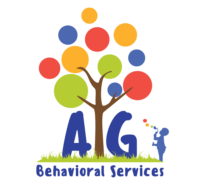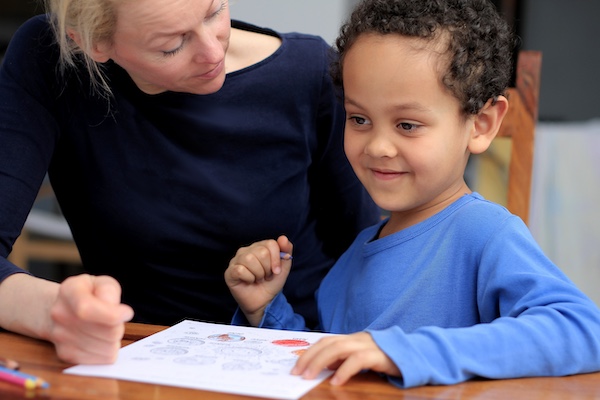As the school year winds down and summer approaches, families of children receiving Applied Behavior Analysis (ABA) therapy often face a shift in routine. The structured schedules of the school year are replaced with the flexibility of summer — and while that freedom can be refreshing, it also presents challenges for maintaining consistency in therapy. Fortunately, with the right planning, families can preserve progress and even find new opportunities for growth during the summer months.
Here are practical tips and strategies to help families prepare for the transition and keep ABA therapy on track:
1. Maintain a Predictable Routine
Children with autism often thrive on consistency. Drastic changes in routine can lead to increased anxiety or regression in learned behaviors. While summer may not mirror the school year schedule exactly, you can still establish a daily routine that includes:
- Set wake-up and bedtimes
- Scheduled therapy sessions
- Regular meal and snack times
- Built-in play and downtime
Using visual schedules or daily planners can help children understand what to expect each day, which supports smoother transitions and a sense of security.
Recent Posts
- Navigating the Holidays with Your Autistic Child: A Guide for Parents
- Essential Reading for Parents of Autistic Children: A Verified Guide
- Real Families, Real Results: Why AG Behavioral Services Is Transforming Lives Through ABA Therapy
- Understanding Autism in 2025: New Data Reveals Rising Prevalence and Changing Demographics
- “Respond and Expand”: A Simple Way to Boost Communication in Children with Autism
2. Consider In-Home ABA Therapy for a Seamless Transition
In-home ABA therapy can be especially valuable during summer, as it provides flexibility while maintaining consistency in a familiar environment. Having sessions at home allows therapists to:
- Work directly on skills relevant to the child’s natural environment (e.g., brushing teeth, mealtime routines, household chores)
- Customize sessions to fit the family’s summer schedule
- Address behaviors in real time as they occur in daily life
- Reduce the stress and logistics of traveling to a center
If your child already receives center-based therapy during the school year, summer is a great time to add or shift to in-home services to support a smoother routine at home.
3. Communicate with Your ABA Provider Early
Before summer starts, have a conversation with your child’s BCBA or ABA therapist to:
- Confirm their availability for summer sessions
- Adjust goals or strategies to fit the new routine
- Discuss how in-home therapy may better support your child during the break
- Explore opportunities for intensive programs or additional hours during the summer
Proactive planning can help avoid gaps in services and ensure therapy remains effective.
4. Incorporate ABA Strategies into Daily Life
Not all learning needs to happen in a formal session. Summer is a perfect time to generalize skills in new environments:
- Practice communication and social skills at the playground or during family gatherings
- Work on daily living skills like preparing meals, dressing independently, or organizing toys
- Use positive reinforcement to encourage desired behaviors throughout the day
In-home therapy can complement this approach by reinforcing these skills where they naturally occur.
5. Use Downtime Wisely
While structured therapy is important, summer also allows time for relaxation, new hobbies, and family bonding. These unstructured moments can be therapeutic too, as long as expectations are clear and behaviors are supported. Make sure your child has access to preferred activities, sensory tools, and calming strategies when needed.
6. Prepare for Travel or Changes in Environment
If summer includes travel or time away from home, plan ahead with these tips:
- Bring familiar items like a favorite toy, communication device, or visual schedule
- Maintain as much of the routine as possible, even if it’s simplified
- Talk to your ABA provider about how to prepare your child for new environments, and consider doing social stories or role-playing in advance
7. Keep Track of Progress
Just because it’s summer doesn’t mean your child’s progress should pause. Keep track of behaviors, skill development, or challenges in a notebook or app. Share these updates with your ABA team to inform data collection and program planning.
8. Be Flexible and Patient
Every child responds differently to transitions. Some may adjust quickly, while others need more time and support. Celebrate small wins, remain consistent, and don’t hesitate to ask your ABA team for guidance if challenges arise.
Final Thoughts
Summer can be a time of growth, learning, and fun when approached with thoughtful preparation. By maintaining consistency, leveraging in-home ABA therapy, and finding creative ways to reinforce skills, your family can ensure that progress continues — even when school is out.
If you’re looking for help developing a summer transition plan or exploring in-home therapy options, reach out to your ABA provider. They can help you build a routine that fits your family’s needs and supports your child’s goals all summer long.
AGBS provides ongoing care for children, adolescents, and young adults with autism to improve the quality of their lives. If you would like learn more about how AGBS can help please contact us here , or call 908-913-0443.




